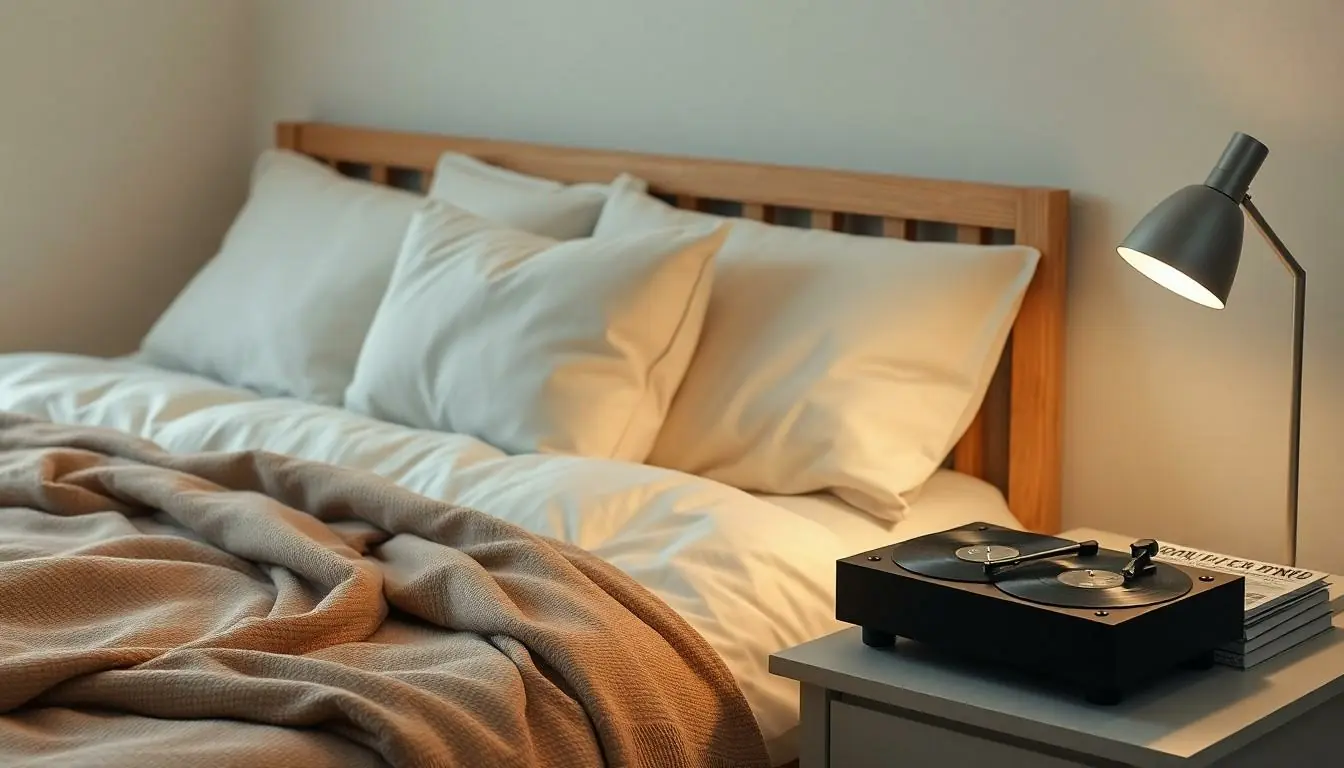Table of Contents
ToggleImagine drifting off to dreamland while the soothing sounds of classical music wrap around you like a cozy blanket. It’s no secret that a good night’s sleep can feel as elusive as a cat in a room full of rocking chairs. But what if the secret to sweet slumber lies in the enchanting melodies of composers like Bach and Chopin?
Understanding Relaxing Classical Music For Sleep
Relaxing classical music plays a significant role in enhancing sleep quality. Its serene melodies provide a calming atmosphere, allowing listeners to unwind completely.
Definition and Characteristics
Relaxing classical music typically features soft dynamics, slow tempos, and gentle instrumentation. Compositions include works by composers such as Debussy, Schubert, and Satie. These pieces often utilize strings, piano, and woodwinds to create a soothing soundscape. Slow, flowing melodies characterize this genre, encouraging relaxation. Additionally, many pieces incorporate minimalistic themes, allowing the mind to drift peacefully into sleep.
Benefits for Sleep Quality
Listening to relaxing classical music can significantly improve sleep quality in several ways. Studies show that it reduces anxiety and stress levels, leading to a more restful state. Engaging with soothing sounds promotes slower heart rates and lowers blood pressure. Enhanced sleep duration occurs as listeners experience deeper sleep cycles. Research indicates that incorporating relaxing music before bedtime can lead to a 30% improvement in overall sleep satisfaction.
Recommended Pieces

Listening to specific classical music pieces can enhance relaxation and improve sleep quality. Below are notable recommendations for creating a calming atmosphere.
Popular Compositions
Bach’s “Air on the G String” provides a serene experience with its gentle melodies. Debussy’s “Clair de Lune” captures a dreamy ambiance, helping to reduce anxiety before sleep. Schubert’s “Ave Maria” offers soothing harmonies, making it a staple for bedtime routines. Chopin’s Nocturnes, particularly Nocturne in E-flat major, evoke a tranquil setting, encouraging a restful state. Each of these compositions contributes uniquely to an environment conducive to sleep.
Lesser-Known Gems
Exploring lesser-known pieces can also yield delightful surprises. Granados’ “Sleep, my child” envelops listeners in a soft embrace with its calming piano lines. Satie’s “Gymnopédies” creates an ethereal soundscape, perfect for unwinding. Tchaikovsky’s “Waltz of the Flowers” adds a touch of whimsy while maintaining a gentle pace. Mendelssohn’s “Lied without Words, Op. 30 No. 6” features delicate melodies that guide listeners toward relaxation. Each composition enriches the pursuit of restful sleep by fostering a serene environment.
Creating the Ideal Sleep Environment
A tranquil sleep environment is essential for enhancing the soothing effects of classical music. Attention to details can significantly heighten relaxation and promote deeper sleep.
Acoustic Considerations
Sound quality plays a crucial role in the listening experience. Choose speakers or headphones that provide clear, rich audio to capture the subtleties in compositions. Avoid harsh or overly loud sounds that can disrupt relaxation. A quiet room, free from background noise, optimizes the listening experience. Consider using soft furnishings, like curtains and carpets, to absorb sound and reduce echoes. Position speakers strategically to create an immersive soundscape. This attention to acoustic detail enhances the calming impact of pieces like Debussy’s “Clair de Lune” or Satie’s “Gymnopédies.”
Complementary Sleep Practices
Incorporating additional sleep practices can complement the effects of classical music. Maintain a consistent sleep schedule to regulate the body’s internal clock. Dim lighting before bedtime signals the brain to wind down. Engage in gentle stretches or yoga to release tension from the body. Consider reading or journaling as calming rituals, leading seamlessly into a music session. Using aromatherapy with relaxing scents, such as lavender, further promotes a restful atmosphere. Combine these practices with soothing melodies for a holistic approach to enhancing sleep quality.
Personal Preferences and Variations
Listening preferences vary widely when it comes to classical music for sleep. Each person may find different compositions more soothing than others.
Tailoring Music Choices
Selecting specific pieces of music can significantly impact relaxation. Individuals often prefer soft, flowing melodies that promote calmness. For instance, while some enjoy the gentle notes of Debussy’s “Clair de Lune,” others might find the tranquil essence of Satie’s “Gymnopédies” more appealing. Experimenting with various composers can help in discovering what works best. Incorporating playlists tailored to personal tastes fosters an even more enjoyable listening experience.
Individual Responses to Music
Different people respond uniquely to music, influencing sleep quality. Research indicates that individual factors, such as mood and emotional state, play a crucial role in how music affects relaxation. Some may find that familiar pieces, like Chopin’s Nocturnes, evoke comforting feelings, making them more effective for sleep. In contrast, others might prefer less recognizable works, which can create a sense of novelty and engagement. Understanding these variations enhances the overall experience of using classical music as a sleep aid.
Embracing relaxing classical music as a sleep aid can transform bedtime into a peaceful retreat. The soothing melodies of composers like Bach and Chopin create an inviting atmosphere that encourages relaxation and tranquility. By selecting pieces that resonate personally, individuals can enhance their sleep experience and foster a deeper sense of calm.
Incorporating these serene sounds into a nightly routine not only supports better sleep quality but also helps reduce stress and anxiety. With the right environment and tailored music choices, anyone can cultivate a restful sanctuary that promotes restorative sleep. Exploring this genre opens up a world of calming possibilities, making it easier to drift off into a peaceful slumber.





